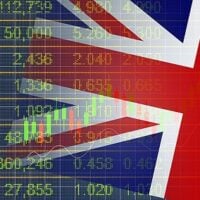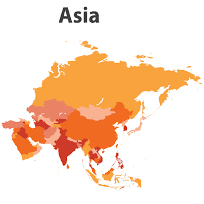Just days after President Trump’s so-called ‘Liberation Day’, global markets have been rocked by a wave of new tariffs that threaten to derail growth, spike inflation, and trigger a fresh global recession. Investors are scrambling to reposition as the most aggressive trade move in modern history takes its toll on sentiment, equities, and economic confidence.
The economic world is reeling from a dramatic policy turn as Donald Trump unleashes sweeping new tariffs across virtually every major U.S. trading partner. Dubbed ‘Liberation Day’ by the MAGA campaign, 2 April marked the formal implementation of what many see as a dangerously miscalculated and overly aggressive protectionist agenda. The 10% blanket tariff, with substantially higher rates for nations like China, Vietnam, and Taiwan, has injected a potent dose of uncertainty into an already fragile global economy.
Trump’s public unveiling of the policy—with a game show-style tariff chart—struck a characteristically theatrical note, but the market response has been anything but playful. Rather than pricing in revenue benefits or near-term fiscal gains, investors have turned their focus to the deeply negative ripple effects. Fears of stagnating growth, accelerating inflation, retaliatory measures, and a collapse in business and consumer confidence have taken centre stage.
Markets responded swiftly and severely. Major equity indexes have fallen sharply into bear market territory, plunging 10–15% in just three days, reflecting a collective reassessment of global risk. There is growing concern that the tariffs could act as a brake on the world economy at a time when momentum is already slowing. The feedback loop is vicious—lower equity prices feed into declining consumer wealth, which in turn dampens spending and business investment. Cuts to public spending and subsequent job losses only deepen the gloom.
Behind Trump’s tariffs lie ostensibly strategic aims: to reshore key industries, trim the fiscal deficit, and pressure global partners into lowering trade barriers. Yet the delivery mechanism has been likened to a cyanide pill—poisonous to both the domestic and global economies. More alarmingly, the belligerent tone of the MAGA camp suggests these measures are not temporary bargaining chips but potentially enduring fixtures in Trump’s economic arsenal.
Nonetheless, seasoned investors are searching for opportunity amid the chaos. There is a prevailing theory that Trump, ever the dealmaker, is using economic disruption as a high-stakes negotiation tactic. Already, reports suggest a 90-day tariff delay may be granted to countries outside China, which could signal an eventual de-escalation. With pressure mounting from both politicians and consumers reeling from 401k losses, momentum to soften the current stance may build rapidly.
From a macro and market perspective, glimmers of hope are starting to appear. The dramatic sell-off has created potential oversold conditions. Economic data from the U.S. labour and housing sectors remain surprisingly strong, offering a buffer against immediate recession fears. If the American economy can maintain positive momentum, the odds for a market rebound improve meaningfully.
Valuations, particularly outside the U.S., have returned to attractive levels. Credit spreads have widened to the point that selective high-yield and investment-grade opportunities are drawing interest. Sentiment indicators, including the CNN Greed & Fear Index and the VIX volatility gauge, are flashing extreme fear—historically a signal of short-term capitulation and a potential contrarian buy signal. Similarly, technical measures indicate that retail investors are panic-selling, often a precursor to near-term market bottoms.
In terms of strategy, TEAM has already acted decisively to safeguard client portfolios. Equity exposure was dialled down in early 2025, with a strategic pivot towards more resilient international markets. Within U.S. equities, a shift to equal-weight indices has provided relative insulation from the worst of the tech-led sell-off. Fixed income strategies have avoided duration risk and leaned into high-quality corporate and hybrid financials, particularly in Europe. Gold, meanwhile, has reaffirmed its safe-haven status, breaking above $3,000 per ounce and outperforming equities significantly over the long term. TEAM continues to maintain and selectively expand precious metals exposure.
In conclusion, while the current storm has not yet passed, TEAM’s disciplined framework has helped preserve capital and reduce volatility through this turbulence. The extreme dislocation in risk assets may soon present compelling re-entry points for long-term investors. Tactical adjustments will be communicated as opportunities unfold, but for now, vigilance remains paramount.
TEAM plc (LON:TEAM) is building a new wealth, asset management and complementary financial services group. With a focus on the UK, Crown Dependencies and International Finance Centres, the strategy is to build local businesses of scale around TEAM’s core skill of providing investment management services.











































